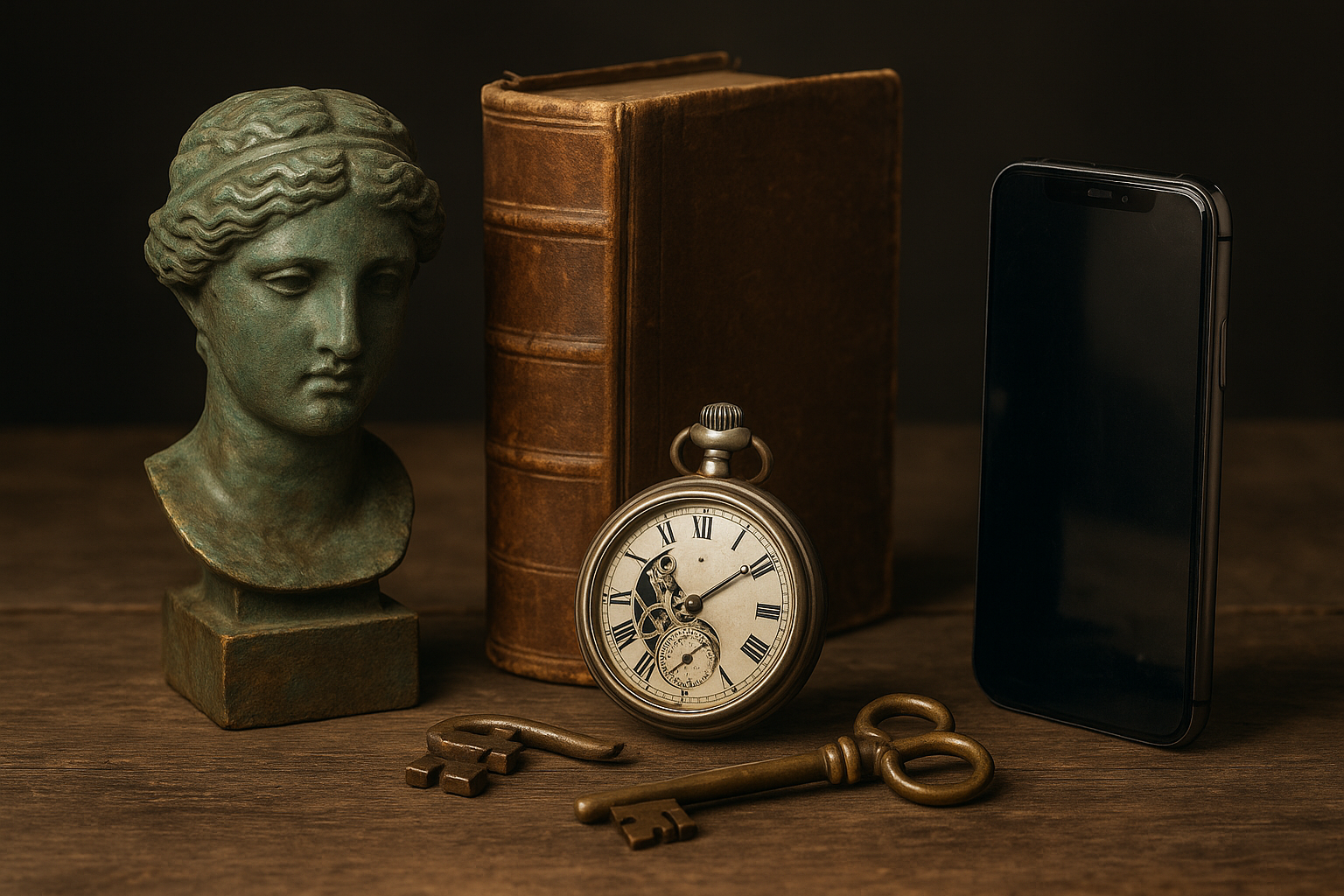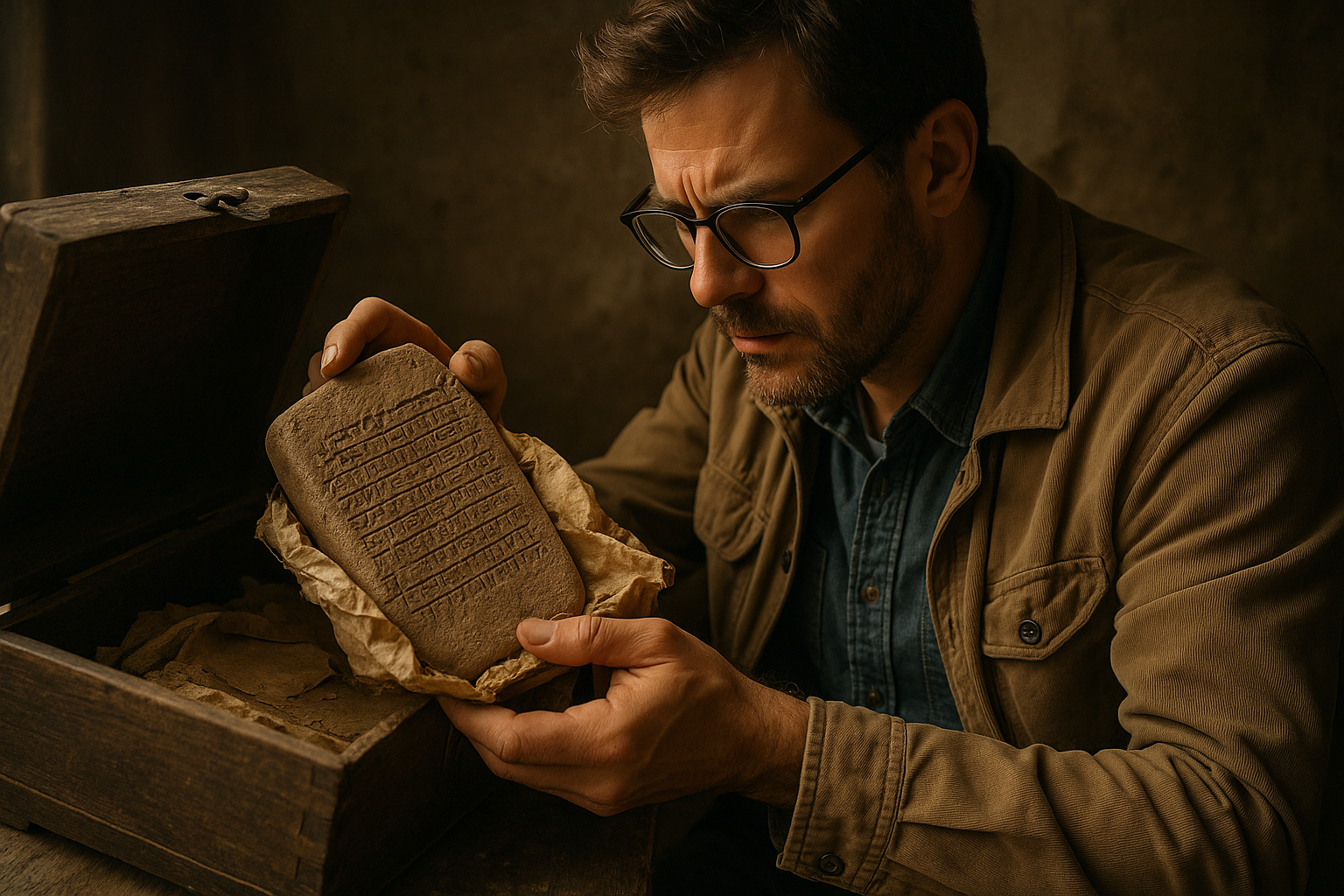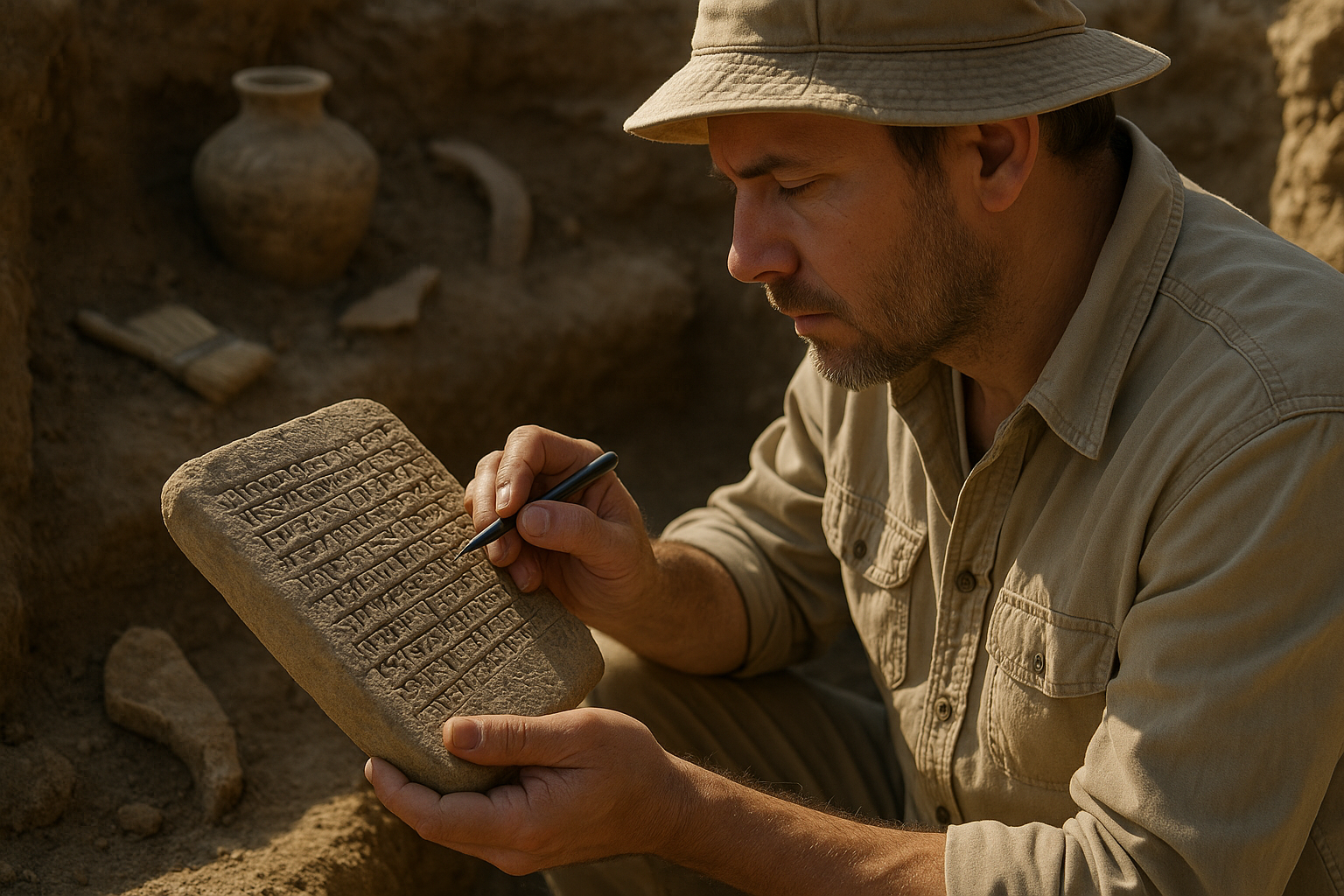The quest to unearth humanity’s forgotten treasures connects us to civilizations long gone, offering profound insights into who we were and who we might become.
🏛️ Why Lost Relics Matter in Our Modern World
Every artifact recovered from the depths of time tells a story that textbooks cannot fully capture. These physical remnants of human existence—from ancient pottery shards to monumental sculptures—serve as tangible bridges between past and present. They represent not merely objects of curiosity, but essential pieces of our collective human narrative that deserve preservation for generations yet unborn.
The importance of archaeological discovery extends far beyond academic circles. When we recover lost relics, we’re essentially reclaiming fragments of human identity that would otherwise vanish into obscurity. These discoveries challenge our assumptions about historical civilizations, reveal forgotten technologies, and demonstrate the remarkable ingenuity of our ancestors who faced challenges without modern conveniences.
Modern archaeology has evolved from treasure hunting into a sophisticated scientific discipline. Today’s archaeologists employ cutting-edge technology alongside traditional excavation methods, ensuring that every discovery is documented, analyzed, and preserved with meticulous care. This scientific approach guarantees that future generations will have access not only to the artifacts themselves but also to comprehensive data about their origins, contexts, and significance.
The Revolutionary Technologies Transforming Archaeological Discovery
Ground-penetrating radar, LiDAR scanning, and satellite imagery have fundamentally transformed how archaeologists locate and study hidden sites. These technologies allow researchers to peer beneath soil and vegetation without disturbing delicate archaeological contexts, revealing entire lost cities that remained invisible for centuries.
LiDAR technology, in particular, has proven revolutionary in densely forested regions. By using laser pulses to create detailed three-dimensional maps of ground surfaces, archaeologists have discovered massive Mayan cities in Guatemala, ancient Cambodian settlements near Angkor Wat, and previously unknown structures across the Amazon rainforest. These findings have rewritten our understanding of pre-Columbian civilizations and their sophisticated urban planning.
Digital Documentation and 3D Preservation
Photogrammetry and 3D scanning technologies now enable archaeologists to create precise digital replicas of artifacts and sites. This digital preservation serves multiple purposes: it provides backup records in case originals are damaged or destroyed, allows researchers worldwide to study objects without physical access, and enables virtual exhibitions that bring discoveries to global audiences.
The tragic destruction of cultural heritage sites in conflict zones has underscored the critical importance of digital archiving. When physical artifacts are lost to war, natural disasters, or looting, these digital records become the only surviving evidence of humanity’s cultural legacy. Organizations worldwide are racing to document endangered sites before they disappear forever.
🔍 Famous Rediscoveries That Changed History
The discovery of Tutankhamun’s tomb in 1922 by Howard Carter remains one of archaeology’s most celebrated moments. The nearly intact burial chamber, filled with golden treasures and perfectly preserved artifacts, provided unprecedented insights into Egyptian royal burial practices and craftsmanship. More importantly, it captured global imagination and sparked widespread interest in archaeological preservation.
The terracotta warriors of Xi’an, discovered accidentally by farmers in 1974, revealed the extraordinary ambitions of China’s first emperor. This massive underground army, comprising thousands of life-sized clay soldiers, each with unique facial features, demonstrated ancient Chinese artistic sophistication and manufacturing capabilities that still astound modern observers.
Machu Picchu’s rediscovery by Hiram Bingham in 1911 (though local people knew of its existence) brought Incan architectural genius to worldwide attention. The site’s remarkable preservation and stunning mountain setting have made it an iconic symbol of pre-Columbian American achievement and a powerful reminder of civilizations that thrived long before European contact.
Recent Discoveries Reshaping Our Understanding
The Antikythera mechanism, recovered from a Greek shipwreck, has puzzled researchers for over a century. Recent technological analysis revealed it to be an incredibly sophisticated astronomical calculator dating to around 100 BCE—far more advanced than any known device from that era. This discovery challenges assumptions about ancient technological capabilities and suggests lost knowledge that took centuries to rediscover.
The Dead Sea Scrolls, found in caves near Qumran between 1947 and 1956, revolutionized biblical scholarship and our understanding of early Judaism and Christianity. These ancient manuscripts, preserved by the region’s arid climate, include the oldest known copies of Hebrew Bible texts and provide invaluable context for religious history.
The Ethical Dimensions of Archaeological Work
Modern archaeology grapples with complex ethical questions about ownership, repatriation, and cultural sensitivity. Who has the right to excavate, study, and display artifacts? Should objects taken during colonial periods be returned to their countries of origin? These questions have no simple answers but demand thoughtful consideration.
Indigenous communities worldwide are increasingly asserting their rights to ancestral remains and sacred objects held in museums. Many institutions now recognize that certain items were acquired unethically and work toward repatriation. This process, while sometimes contentious, represents important progress toward acknowledging historical injustices and respecting cultural sovereignty.
Balancing Access and Preservation
Archaeological sites face constant tension between public access and conservation needs. Tourist traffic can damage fragile structures and ecosystems, yet restricting access limits educational opportunities and public engagement with cultural heritage. Finding sustainable balance requires careful management, infrastructure investment, and visitor education.
Some sites employ innovative solutions such as replica caves (like Lascaux II in France) that allow visitors to experience ancient art without endangering the originals. Virtual reality technology offers another promising avenue, enabling immersive experiences of archaeological sites from anywhere in the world while eliminating physical impact.
🌍 Climate Change: The Race Against Time
Rising sea levels, increased storm intensity, and changing precipitation patterns threaten archaeological sites globally. Coastal settlements face inundation, permafrost thaw exposes previously frozen artifacts to decomposition, and extreme weather events accelerate erosion at vulnerable locations. Climate change has transformed archaeology into a race against time.
In the Arctic, melting permafrost reveals remarkably preserved organic materials—textiles, wooden implements, and even frozen human remains—that provide unprecedented insights into ancient lifeways. However, once exposed to air and warmer temperatures, these materials deteriorate rapidly. Archaeologists must mobilize quickly to document and recover items before they’re lost forever.
Underwater archaeology faces unique challenges as warming oceans alter marine ecosystems and ocean acidification threatens shipwrecks and submerged settlements. Many shipwrecks that survived centuries in stable underwater environments now face accelerated decay from changing water chemistry and increased biological activity.
The Role of Citizen Scientists and Community Archaeology
Metal detecting hobbyists, amateur historians, and local communities contribute significantly to archaeological discovery. While professional oversight remains essential, engaging public participation democratizes heritage exploration and increases the likelihood of finding important sites. Many significant discoveries have resulted from amateur enthusiasm combined with professional expertise.
The Portable Antiquities Scheme in England and Wales exemplifies successful collaboration between amateurs and professionals. Metal detectorists report their finds to local archaeologists, creating an extensive database of small artifacts that illuminate patterns of settlement, trade, and daily life across centuries. This cooperative model respects both amateur contributions and professional standards.
Educational Opportunities Through Participation
Archaeological field schools and volunteer excavations provide hands-on learning experiences while advancing research. Participants gain practical skills, develop deeper appreciation for cultural heritage, and contribute meaningful labor to projects that might otherwise lack sufficient resources. These programs foster the next generation of archaeologists and informed heritage advocates.
Community archaeology projects that involve descendant populations in studying their own heritage prove particularly valuable. These collaborations ensure that research respects cultural perspectives, incorporates oral histories and traditional knowledge, and produces outcomes meaningful to the communities most connected to the discoveries.
💡 Innovative Preservation Techniques for Fragile Artifacts
Conservation science has advanced dramatically, offering solutions for preserving materials once considered too fragile to survive excavation. Freeze-drying, controlled atmosphere storage, and advanced chemical treatments stabilize organic materials, metals, and composite objects that would otherwise deteriorate rapidly.
The Mary Rose, Henry VIII’s flagship recovered from the English seabed, required decades of conservation treatment. The waterlogged wooden hull underwent a complex preservation process involving gradual replacement of water with polyethylene glycol, followed by controlled drying. This painstaking effort saved a unique sixteenth-century vessel and the thousands of artifacts found within it.
Ancient textiles present particular challenges, as fabrics degrade quickly when exposed to light, moisture, and handling. Modern textile conservation employs climate-controlled storage, specialized mounting techniques, and advanced analysis methods that extract maximum information while minimizing physical stress on delicate fibers.
The Economics of Archaeological Research
Funding archaeological work requires balancing scientific priorities with practical constraints. Excavation is expensive, labor-intensive, and time-consuming, while conservation and storage of recovered materials demands ongoing financial commitment. Securing adequate funding remains a persistent challenge for the field.
Cultural resource management—archaeological surveys conducted before construction projects—provides significant employment for archaeologists while protecting heritage sites from development impacts. This model demonstrates that heritage protection and economic development need not conflict when appropriate safeguards are implemented.
Heritage Tourism as Economic Catalyst
Archaeological sites generate substantial economic benefits through tourism, creating jobs and supporting local economies. Pompeii attracts millions of visitors annually, providing revenue that funds ongoing excavation and conservation while supporting hotels, restaurants, and related businesses throughout the region.
However, sustainable heritage tourism requires careful management to prevent the destruction of the very resources that attract visitors. Carrying capacity limits, seasonal restrictions, and visitor education programs help protect sites while maintaining their accessibility and economic contributions.
🔐 Combating Looting and the Illicit Antiquities Trade
The illegal trade in cultural artifacts funds organized crime and destroys irreplaceable archaeological contexts. When looters excavate sites for marketable objects, they obliterate the contextual information that gives artifacts scientific meaning, transforming priceless cultural heritage into mere commodities.
International conventions like the 1970 UNESCO agreement attempt to regulate antiquities trade, but enforcement remains inconsistent. Wealthy collectors and unscrupulous dealers continue to drive demand for looted objects, while conflict zones and impoverished regions struggle to protect vulnerable sites from organized plundering.
Technology offers new weapons against looting. Satellite monitoring can detect unauthorized excavation at remote sites, while databases of stolen artifacts assist law enforcement in recovering trafficked items. Increased public awareness about the destructive nature of the illicit trade also helps reduce demand for unprovenanced antiquities.
Training the Next Generation of Heritage Guardians
Archaeological education must evolve to address contemporary challenges including climate change, digital technologies, community engagement, and ethical complexities. Modern archaeologists need not only excavation skills but also proficiency in remote sensing, data management, public communication, and cross-cultural collaboration.
Diversity in archaeology remains an ongoing concern. The field has historically been dominated by scholars from wealthy nations studying other cultures, a dynamic that raises questions about perspective and power. Increasing participation by scholars from diverse backgrounds enriches the discipline and ensures more inclusive, nuanced interpretations of the past.
🌟 The Promise of Undiscovered Treasures
Despite centuries of archaeological exploration, vast numbers of sites remain undiscovered. Ocean floors harbor countless shipwrecks and submerged settlements. Dense rainforests conceal forgotten cities. Desert sands bury entire civilizations. Each generation of archaeologists has the opportunity to make discoveries that transform our understanding of human history.
Emerging technologies promise to accelerate the pace of discovery. Artificial intelligence analyzes satellite imagery to identify potential archaeological sites, machine learning helps decipher ancient languages, and environmental DNA from soil samples reveals information about past ecosystems and human activities without traditional excavation.
The democratization of technology means that tomorrow’s groundbreaking discoveries might come from unexpected sources—a student analyzing publicly available satellite data, a citizen scientist using accessible digital tools, or a community member sharing traditional knowledge about local heritage sites.
Connecting Ancient Wisdom to Contemporary Challenges
Archaeological discoveries offer more than historical curiosity; they provide practical insights for contemporary challenges. Ancient agricultural techniques inform sustainable farming practices. Traditional water management systems inspire modern conservation efforts. Past civilizations’ responses to climate change and environmental stress offer cautionary tales and potential solutions.
The resilience and ingenuity of ancient peoples remind us of human adaptability across vastly different circumstances. Their achievements, created without modern technology, demonstrate that innovation emerges from necessity and that sustainable solutions often draw on accumulated traditional knowledge rather than solely on cutting-edge invention.

Building a Legacy of Preservation
Our generation bears responsibility for protecting cultural heritage for those who follow. This means not only recovering lost relics but ensuring their proper conservation, documentation, and accessibility. It requires adequate funding for museums and research institutions, legal protections for archaeological sites, and public education that fosters appreciation for cultural heritage.
Digital initiatives that make archaeological data freely accessible represent important steps toward democratizing heritage. Open-access databases, virtual museum collections, and online educational resources ensure that discoveries benefit humanity broadly rather than remaining confined to academic circles or physical institutions.
Every artifact preserved, every site protected, and every discovery shared enriches the legacy we pass to future generations. These relics connect us to our shared human story, reminding us that we are part of a continuum stretching from the distant past into an unknown future. By unearthing and preserving these treasures, we ensure that coming generations can continue learning from those who came before, maintaining the precious thread of human memory that defines civilization itself.
Toni Santos is a temporal researcher and symbolic archaeologist specializing in the study of forgotten burial systems, sacred archival practices, and the visual languages embedded in ancient temporal lore. Through an interdisciplinary and artifact-focused lens, Toni investigates how humanity has encoded knowledge, memory, and mystery into the temporal world — across cultures, rituals, and vanished civilizations. His work is grounded in a fascination with time capsules not only as vessels, but as carriers of hidden meaning. From extinct burial ritual practices to mythical codices and secret temporal seals, Toni uncovers the visual and symbolic tools through which cultures preserved their relationship with the temporal unknown. With a background in design semiotics and temporal artifact history, Toni blends visual analysis with archival research to reveal how time capsules were used to shape identity, transmit memory, and encode sacred knowledge. As the creative mind behind eltonxy, Toni curates illustrated chronologies, speculative temporal studies, and symbolic interpretations that revive the deep cultural ties between artifacts, ritual markings, and forgotten messages. His work is a tribute to: The lost temporal wisdom of Forgotten Time Capsule Burial Rituals The guarded archives of Sacred Codices and Forgotten Temporal Archives The mythopoetic presence of Temporal Symbols and Ritual Markings The layered visual language of Vanished Artifacts and Temporal Messages Whether you're a temporal historian, symbolic researcher, or curious gatherer of forgotten chronological wisdom, Toni invites you to explore the hidden roots of time capsule knowledge — one seal, one glyph, one message at a time.




